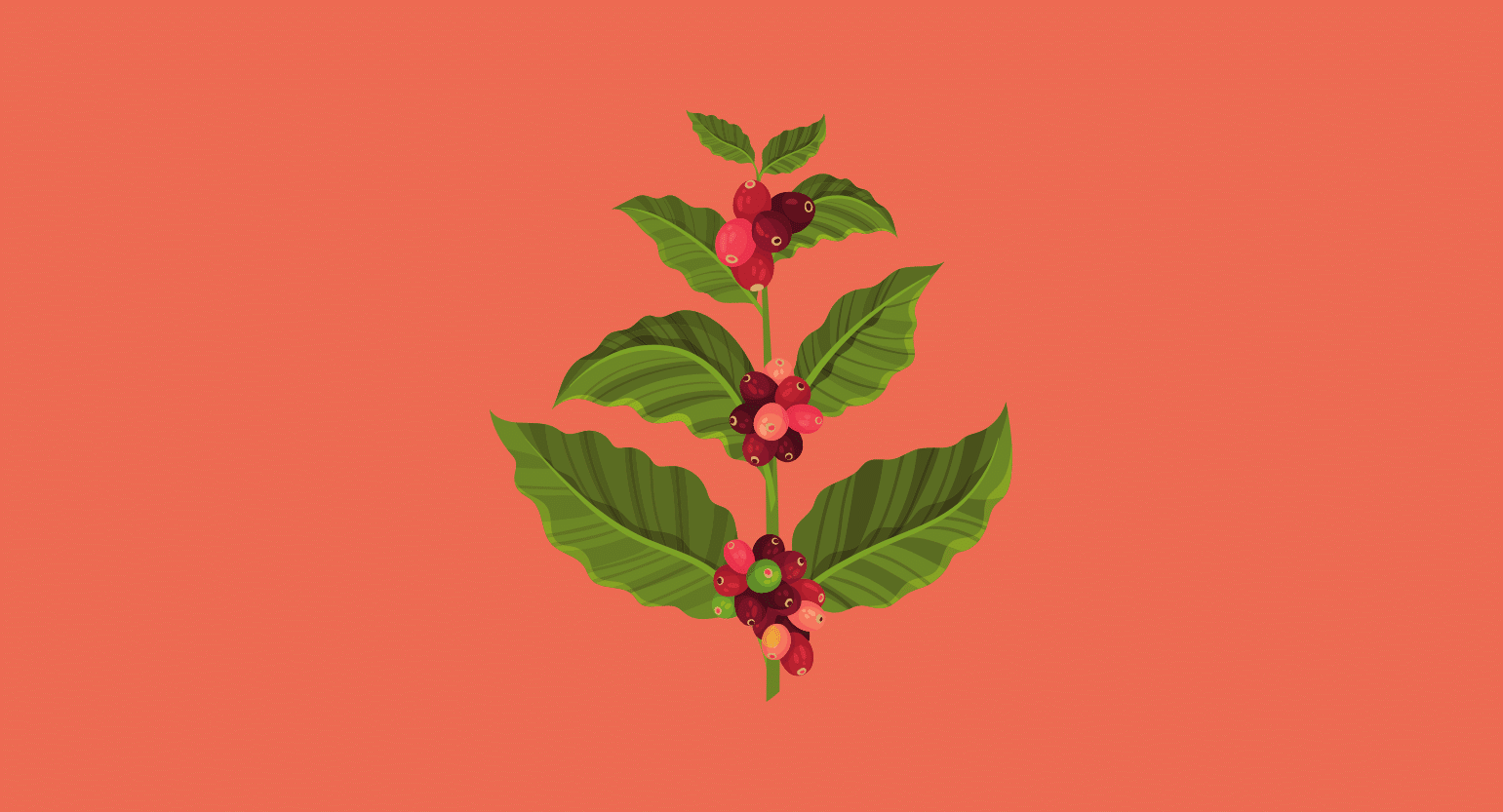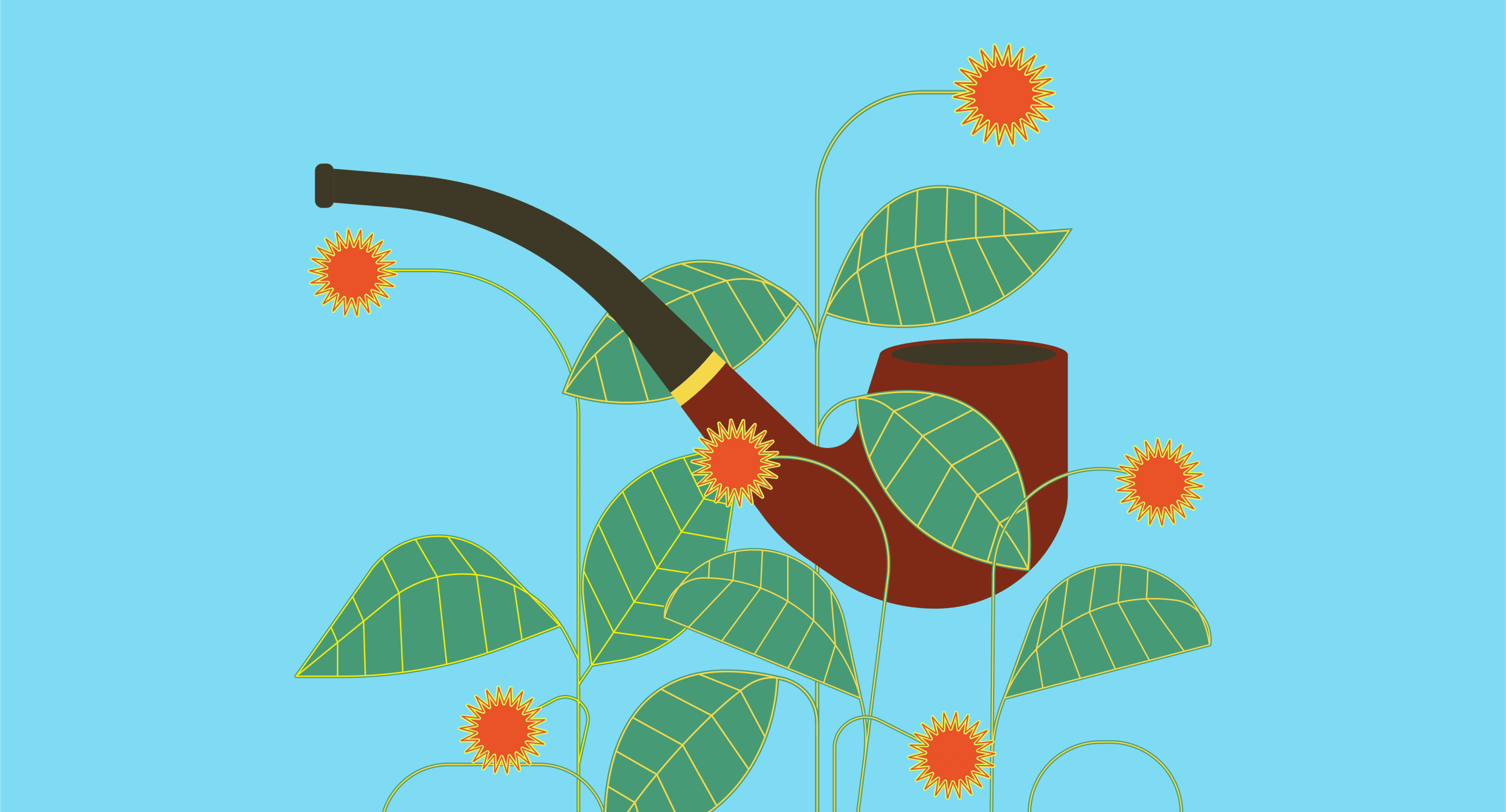What Popular Plants Are a Part of This Family?
There are thousands of different species in the coffee family found in virtually every environment short of the antarctic. The most prominent (obviously) is the coffee plant, which produces the most popular stimulating beverage in the world.
There are plenty of other prominent members in the family, too, including kratom, cinchona (source of quinine used to make tonic water), Gardenia, and much more.
Let’s explore some of the most prominent members of this impressive plant family.
1. Coffea arabica (Coffee)
The Rubiaceae family is also called “the coffee family,” so it should come as no surprise that the coffee tree is one of the most popular plants belonging to the family.
There are over 120 species of coffee plants, but the most common are:
- C. arabica: Up to 80% of the world’s coffee comes from this one due to its sweet taste.
- C. canephora: Also known as Robusta; this makes up to 40% of the world’s coffee and has a higher caffeine content than arabica.
Also see: Is It Safe to Mix Kratom & Coffee (Caffeine)? What Are The Risks?

2. Mitragyna speciosa (Kratom)
Kratom, which is dried and ground leaves from the Mitragyna speciosa tree, also belongs to the Rubiaceae family. It can treat many issues and acts as a powerful pain reliever, stimulant, sleep aid, and anxiolytic.
Because coffee and kratom are highly stimulative, many people incorrectly assume that all plants within the Rubiaceae family are stimulants. This is not the case, although some other species have been used in traditional African medicine that are stimulative [1].
People might also assume that kratom tastes good, but its bitter taste will lead to disappointment. Fortunately, there are ways to mask kratom’s taste and help it go down easier.

3. Gardenia spp.
Another popular plant in the family is the Gardenia, a common ornamental plant used throughout America because of its fragrance.
This genus contains 140 species, but one of the most popular is G. jasminoides. Less popular Ixora (West Indian Jasmine) and Nertera (Coral Bead Plant) also belong to the Rubiaceae family.

4. Cinchona spp. (Quinine Tree)
Many people are familiar with the alkaloid quinine, which comes from the bark of the quina or Cinchona tree.
There are 23 species in this group, many of which have been used in traditional medicine for hundreds of years. Its most popular use is to treat malaria.

5. Carapichea ipecacuanha (Ipecac)
Finally, Carapichea ipecacuanha. Ipecac, a common emetic used in poison control, is derived from the roots of this species, another member of the Rubiaceae family.
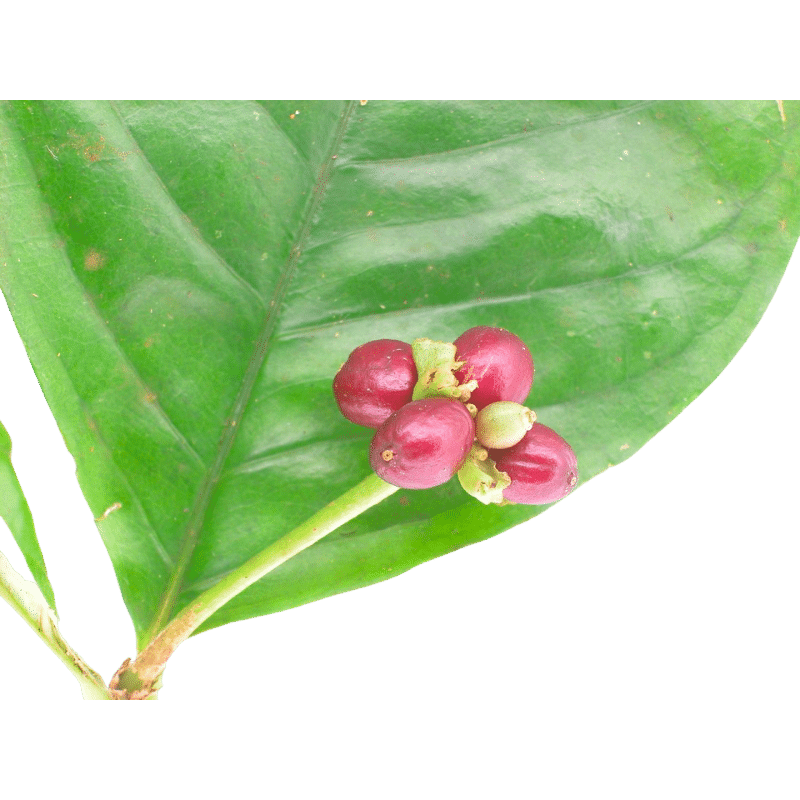
6. Psychotria viridis (Chacruna)
The Psychotria genus contains about 1500 different species, mainly growing around tropical forests in South America, Africa, and Southeast Asia.
Psychotria viridis, in particular, is used as the source of DMT in the traditional shamanic herb preparation, ayahuasca.
DMT is an alkaloid that mimics serotonin in the brain, producing intense visions and out-of-body experiences lasting up to 10 hours in duration.
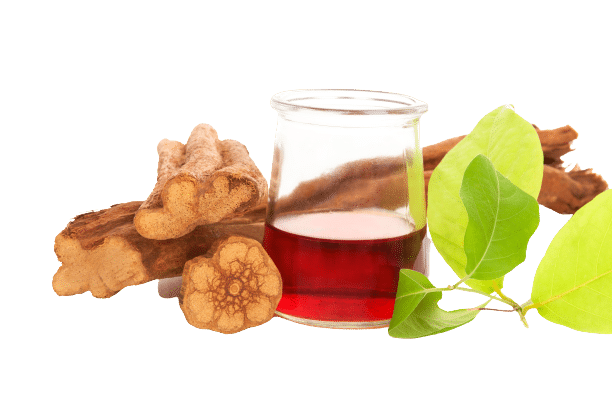
What Do Rubiaceae Plants Look Like?
Plants in the Rubiaceae family have a few distinct characteristics that make them easily recognizable.
Rubiaceae plants have:
- Full, whorled leaves, meaning three or more extend from each node;
- Interpetiolar stipules, which means stipules (which look like tiny leaves), form between two petioles, where new leaves extend from the stem; and
- Tubular corollas, meaning the flowers form a tube, out of which the stamens extend.
Most Rubiaceae plants are woody trees or shrubs — like the coffee and kratom trees — but some are non-woody flowering plants.
Given the massive number of plants in the Rubiaceae, there are countless differences between the species. However, all Rubiaceae plants share the above characteristics.
Where Are Rubiaceae Plants Found?
Rubiaceae are one of the most prominent plant families, and the 13,000 species included in it span most of the world. These plants are most commonly found in humid and tropical areas and have a nearly equal distribution in subtropical regions.
However, they persist as a family in almost every country. They can thrive in a wide array of soil and weather conditions, but they generally don’t appear in arid deserts or regions like Antarctica, where extreme cold prohibits growth.
The species within the Rubiaceae are much more discerning about where they will grow and thrive. For example, the coffee tree grows in Central America, South America, Africa, Southeast Asia, and some select regions in the Middle East. Beyond these regions, native coffee trees are non-existent.
Another excellent example of a more selective plant in the Rubiaceae family is the Mitragyna speciosa or kratom tree. Kratom grows in select countries in Southeast Asia and doesn’t appear naturally anywhere else in the world. The countries with the largest populations of kratom trees are Malaysia, Thailand, Indonesia, Myanmar, and Papua New Guinea.
Geraniums, another popular Rubiaceae plant, grow in more temperate regions and don’t need the extreme humidity and warm climate that coffee and kratom trees require to thrive.
Suggested Reading: How to Grow Kratom

What Are Plants In the Coffee Family Used for?
The Rubiaceae plant family is very versatile and used for practical purposes worldwide.
Below are some of the most common uses for Rubiaceae plants.
1. Beverages
Of course, with the coffee tree belonging to this plant family, Rubiaceae plants are most commonly used in beverages. Coffee is the most widely used plant in this family, and it’s consumed mainly through roasting, grinding, and soaking the seeds in hot water.
2. Food
A less common use for plants in the Rubiaceae family is a source of food. Medlar fruits in Africa, African peaches, and Morinda citrifolia (commonly called “noni”) are all examples of foods that belong to the Rubiaceae family.
3. Medicine
For hundreds of years, the Rubiaceae plant family has played a rather important role in traditional medicine.
Perhaps most famously, leaves from the kratom tree have been chewed or ground and consumed to provide a wealth of potential benefits.
Common uses for kratom leaves and kratom powder include pain relief, inflammation reduction, stimulation, relaxation, sedation, increased focus, and attention, treating opiate withdrawal symptoms, and much more [2].
Syrup of ipecac is made from Carapichea ipecacuanha trees. It has been used in traditional and modern medicine to induce vomiting and treat fever.
Quinine, derived from the bark of the Cinchona tree, is an alkaloid most famous for treating symptoms of malaria [3]. It also has other common uses, including fighting infection, and has an additive effect on some antidepressants [4].
The bark from the Breonadia salicina tree has been used in traditional African medicine to treat wounds, ulcers, fevers, headaches, and fungal infections [5]. It also helps with an upset stomach, diarrhea, and other GI issues [6].
Coffee plant seeds, beans, and leaves also have some medicinal value. Studies show the leaves have all the major metabolites that the seeds and beans have, along with carotenoids, chlorophyll pigments, and other antioxidants and compounds with therapeutic properties [7].
4. Dyes
The root of the Rubia tinctorum, or rose madder plant, is often crushed to produce a red dye for clothing. The roots of the fruit-bearing Morinda citrifolia tree, another member of the Rubiaceae family, create a yellow dye.
5. Decoration
Finally, many flowering plants in the Rubiaceae family thrive in most conditions, making them popular ornamental choices for landscaping.
Gardenias are perhaps the most popular ornamental plant in the family. The West Indian Jasmine (also known as the “jungle geranium”) is another decorative plant used worldwide. Several species in the genus Mussaenda look like hydrangeas and are used for landscaping purposes, mostly in eastern countries.
The Coral Bead Plant, New Zealand laurel, Rothmannia globosa, and plants in the Morinda genera are also commonly used for decorative purposes worldwide.
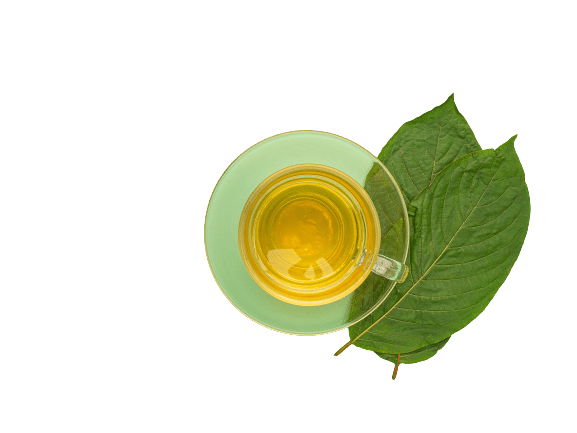
Wrapping Up: The Importance of the Rubiaceae Family
The Rubiaceae family is a massive plant family containing more than 13,000 individual plant species and 600 genera. The plants belonging to this family persist in most regions throughout the world. They’re identifiable by tubular flowers, interpetiolar stipules, and whorled leaves.
Some of the most popular plants in the Rubiaceae family include the coffee tree, the kratom tree, and geraniums. These plants, and others in the family, have been (and still are) used for medicinal purposes, food, beverages, as decorative plants, and as a source of dye for clothing.
- Eriksson, O., & Bremer, B. (1991). Fruit characteristics, life forms, and species richness in the plant family Rubiaceae. The American Naturalist, 138(3), 751-761.
- Fluyau, D., & Revadigar, N. (2017). Biochemical benefits, diagnosis, and clinical risks evaluation of kratom. Frontiers in psychiatry, 8, 62.
- Hoofnagle, J. H., Serrano, J., Knoben, J. E., & Navarro, V. J. (2013). LiverTox: a website on drug‐induced liver injury.
- Guo, W. Y., Todd, K. G., Bourin, M., & Hascoet, M. (1995). The additive effects of quinine on antidepressant drugs in the forced swimming test in mice. Psychopharmacology, 121(2), 173-179.
- Mahlo, S. M., McGaw, L. J., & Eloff, J. N. (2013). Antifungal activity and cytotoxicity of isolated compounds from leaves of Breonadia salicina. Journal of ethnopharmacology, 148(3), 909-913.
- Al-Qurainy, F., Gaafar, A. Z., Khan, S., Nadeem, M., Tarroum, M., Alaklabi, A., & Thomas, J. (2013). Antibacterial activity of leaf extract of Breonadia salicina (Rubiaceae), an endangered medicinal plant of Saudi Arabia. Genet Mol Res, 12(3), 3212-9.
- Acidri, R., Sawai, Y., Sugimoto, Y., Handa, T., Sasagawa, D., Masunaga, T., … & Nishihara, E. (2020). Phytochemical profile and antioxidant capacity of coffee plant organs compared to green and roasted coffee beans. Antioxidants, 9(2), 93.
